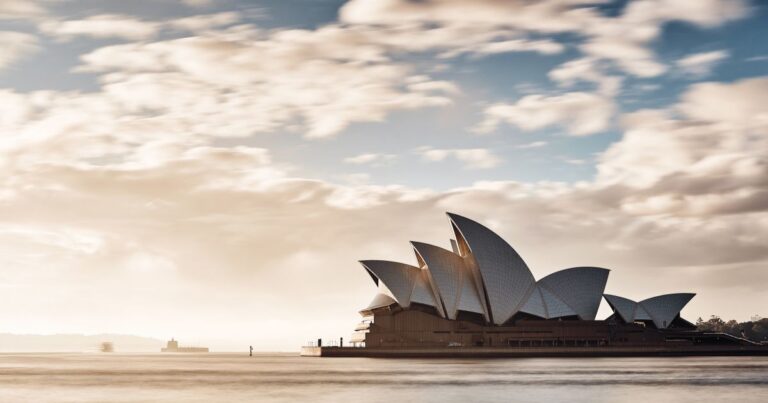The ten suburbs in Sydney with the highest percentage of Chinese residents per capita.
Over the past couple of decades, ongoing immigration has continued to shape – and re-shape – the face of Sydney’s demographics.
From the original group of British and Scottish imports, to following waves of Italian, Lebanese and other nationalities, it’s played a key role in how diverse our city truly is.
In recent years, Chinese residents have been the biggest migrants to Sydney, both for education and quality of life purposes, while there have also been strongly Chinese-flavoured suburbs across Sydney for decades as well.
But which suburbs currently are home to the greatest proportion of residents of Chinese ancestry? We take a look at the 10 most Chinese suburbs in Sydney here.
10. Haymarket

Region: Sydney city
% of Chinese residents: 31.9%
It should come as a surprise to absolutely no-one that Sydney’s bustling Chinatown hub brings with it a longstanding community of Chinese residents, restaurant owners, general stores and more.
An eternally busy and bustling slice of the CBD that starts from the northern side of Central Station and flows basically down towards the water at Darling Harbour, it’s frequented by businesspeople for daily lunches, tourists stumbling their way down towards the city’s icons, and every other aspect of urban Sydney life.
“It’s frequented by businesspeople for daily lunches, tourists stumbling their way down towards the city’s icons, and every other aspect of urban Sydney life.”
If you’re after a cavalcade of choices for different variations on Chinese cuisine within easy reach of the major highlights of central Sydney then Haymarket certainly delivers, with an array of choices mostly covering food from the southern regions of China.
Thai food and residents also feature prominently here, providing yet more choice for places to grab a quick or more in-depth bite to eat.
Haymarket’s streetscape is one of busy traffic-heavy streets, shopping centres and the odd towering office building, and is hectic at all regular hours of the day.
It’s also statistically quite dangerous, home to high rates of petty theft and pickpocketing per capita due to its relatively low overall resident population and yet massively high foot traffic.
9. Carlingford

Region: North Shore
% of Chinese residents: 32.0%
Renowned for its quality array of educational amenities, Carlingford has ballooned in international popularity for those looking to put their kids into a respected school.
There’s several to choose from among the public, private and specialist variety, and as a result families are drawn here from manly locales – China included.
Carlingford’s quite a large suburb overall with a hefty mix of services, housing, parks, sporting grounds and other mixed amenities within it, as well as a diverse streetscape and housing profile.
Plenty of newer, higher-density builds have been added in recent years, and places like its flagshop shopping centre Carlingford Court are now much busier than before.
“Carlingford has ballooned in international popularity for those looking to put their kids into a respected school.”
Its Chinese presence shows in other ways as well; there’s an abundance of Chinese restaurants and other smaller-scale stores here, including Asian grocery stores offering a wide array of Eastern goods for cooking and everyday use.
This does mean that there is a limited array of other cuisines for a suburb of its size, however.
Carlingford’s safe and reasonably well-located, however traffic issues (highlighted by Pennant Hills Road) and its now-removed train station can make navigating it by road a bit of a chore.
8. Chippendale
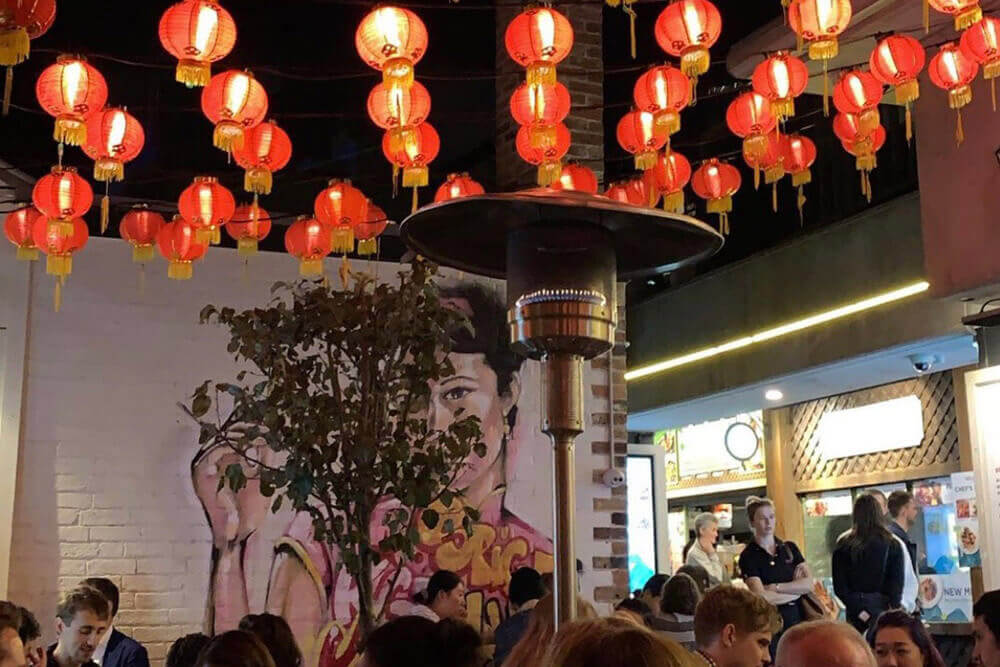
Region: Sydney city
% of Chinese residents: 33.1%
One of the coolest and most unique little suburbs in all of Sydney, Chippendale is another place in which education has been a key driving factor in shifting its demographics.
It’s home to multiple student accommodations and university campuses including the love-it-or-hate-it UTS building, and is a favoured shopping and hangout spot both for Chinese students and those from elsewhere around the world.
“Chippo” boasts an entirely revamped streetscape centred around its innovative One Central Park complex – not only the chic “post-apocalyptic” modern tower itself, but the village green and modern shops and restaurants along with it. Broadway Shopping Centre is pretty comprehensive for a space right in the city, and its mix of unique other cultural attractions like the White Rabbit Gallery and Spice Alley help set it apart.
“Chippo” boasts an entirely revamped streetscape centred around its innovative One Central Park complex.”
It’s also cleaned up its act a bit with some of this redevelopment, but is still prone to a little bit of drama as a go-to spot for drinks and live music. It’s the price to pay for a place that actually has a pulse, however, with places such as the Landsdowne Hotel one of the few remaining bastions of dependable live entertainment in central Sydney.
We have it listed as one of our 10 Best Suburbs in Sydney to Visit (But Not to Live) for a reason – it’s got cool highlights, but it’s also expensive, traffic-heavy, and noisy as a result.
7. Zetland
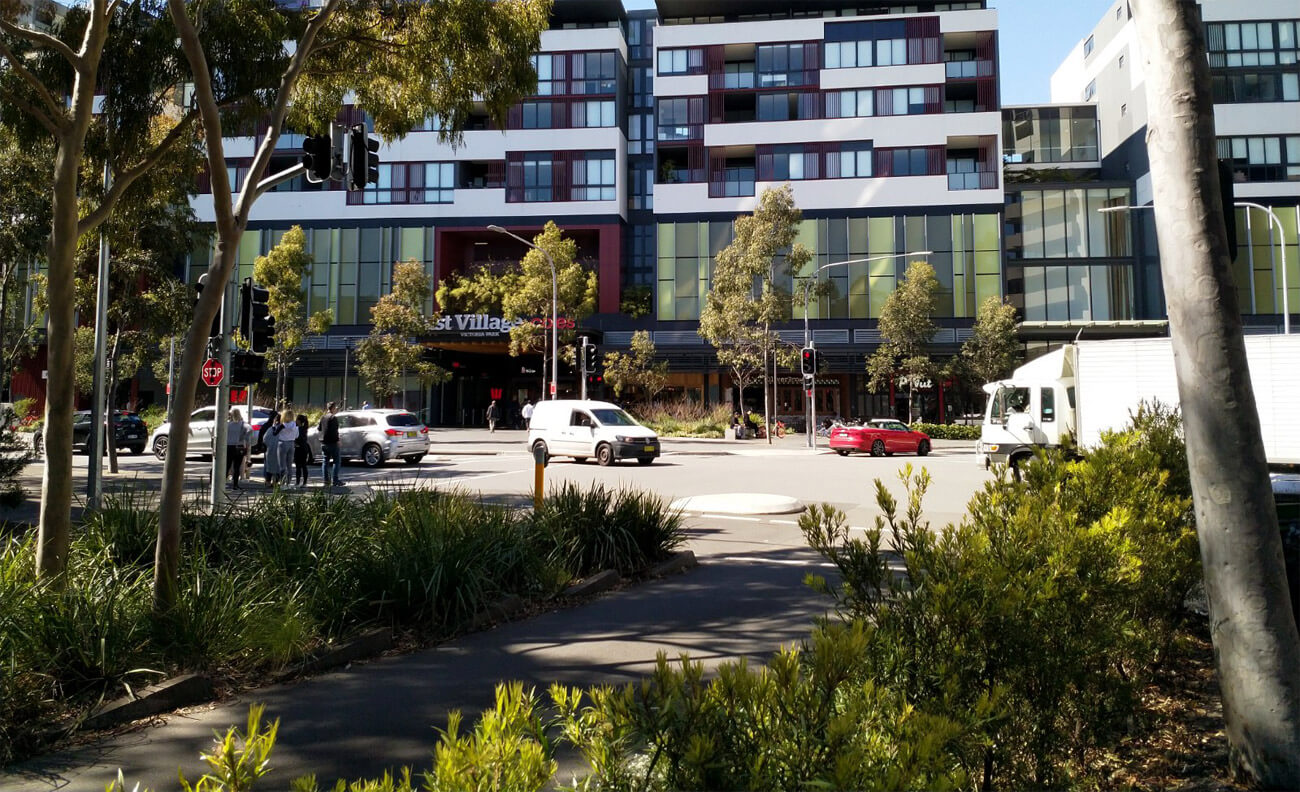
Region: Southern suburbs
% of Chinese residents: 33.8%
The posterchild for the new face of high-density Sydney development, Zetland is very much a love-it-or-hate-it proposition depending on what you want from daily life.
Part of the greater Green Square development project, it’s physically not too far from Sydney city and is dense with ultra-modern apartments and modernly-designed urban green spaces that are quite pleasant on the surface.
Many Chinese and other residents have been drawn to the area due to its mix of convenient location and (relatively, for Sydney) affordable apartment prices, with massive amounts of construction recently undertaken to pump out a huge quantity of large, mid-rise apartment blocks. The prospect of a slick, modern home with all the new fittings has obvious appeal as well.
“Being able to jump on the train and be in the heart of Sydney city within 10 minutes is nothing to sneeze at.”
Being able to jump on the train and be in the heart of Sydney city within 10 minutes is nothing to sneeze at, as does having an array of all the essential services on your doorstep.
Zetland has seen plenty of new Chinese and generally Asian restaurants pop up with all this new development as well; add in supermarkets, pharmacies, gyms and the like and it’s basically a self-contained micro-city.
Of course, the lack of living space and downsides of high-density living may not be for everyone. The roads here are increasingly clustered with traffic due to all the new residents, and lack of a yard or thin apartment walls can all play a factor in impacting daily quality of life.
6. Chatswood
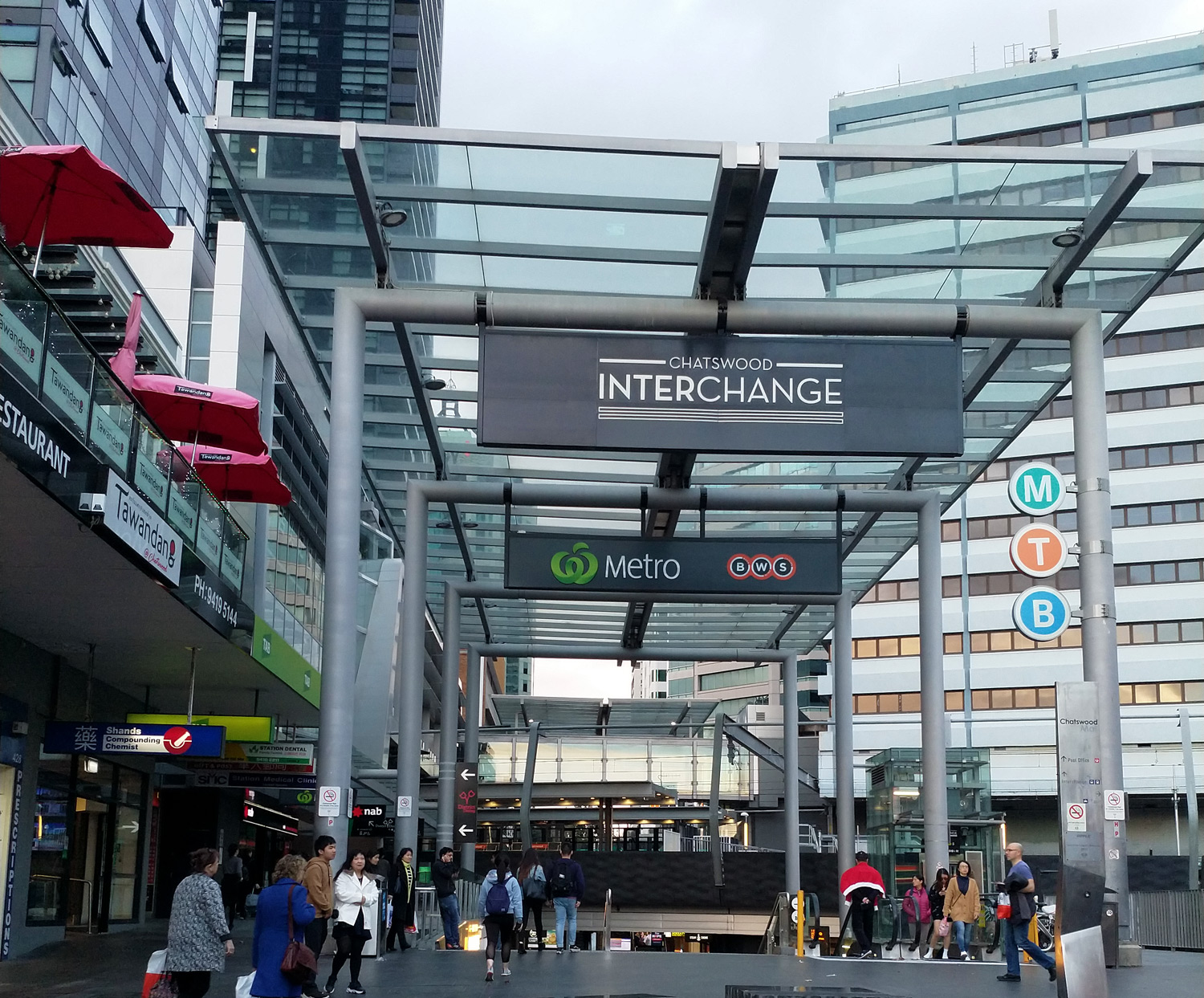
Region: North Shore
% of Chinese residents: 34.1%
Chatswood is the closest thing to a “classy, modern Chinatown” that exists in Sydney in the present day.
It’s home to the highest array of shopping opportunities of any suburb in Sydney with two massive complexes within walking distance of one another, and more Chinese restaurants, Asian bakeries and bubble tea shops than you can shake a chopstick at.
It’s also something of a hub for business on the North Shore, with a number of prominent international companies having their Sydney branch offices here. Throw in a well-serviced rail network courtesy not only of the T1 heavy rail line but also the new Metro as well, and it’s a bustling, modern and pretty slick slice of Sydney life overall.
“It’s a bustling, modern and pretty slick slice of Sydney life overall.”
Outside of Crows Nest, Chatswood is also one of the few suburbs on Sydney’s North Shore with something of a pulse after dark. It’s got a couple of decent pubs/hangout spots in The Orchard and some other smaller hotels, while its cinemas also typically ensure there’s people around at night.
Pop-up stalls offering Asian cuisines are also a regular occurrence, and it’s lively in its central area with some kind of interesting Chinese-themed performance visible at most times throughout the year.
Chatswood’s also far safer in the present day than in the past; combine all these positive factors (along with good schools nearby) together and it’s now EXPENSIVE as a place to live. Many of its residential streets have larger and prestigious homes carrying hefty pricetags, while its apartments aren’t cheap either.
5. Ultimo
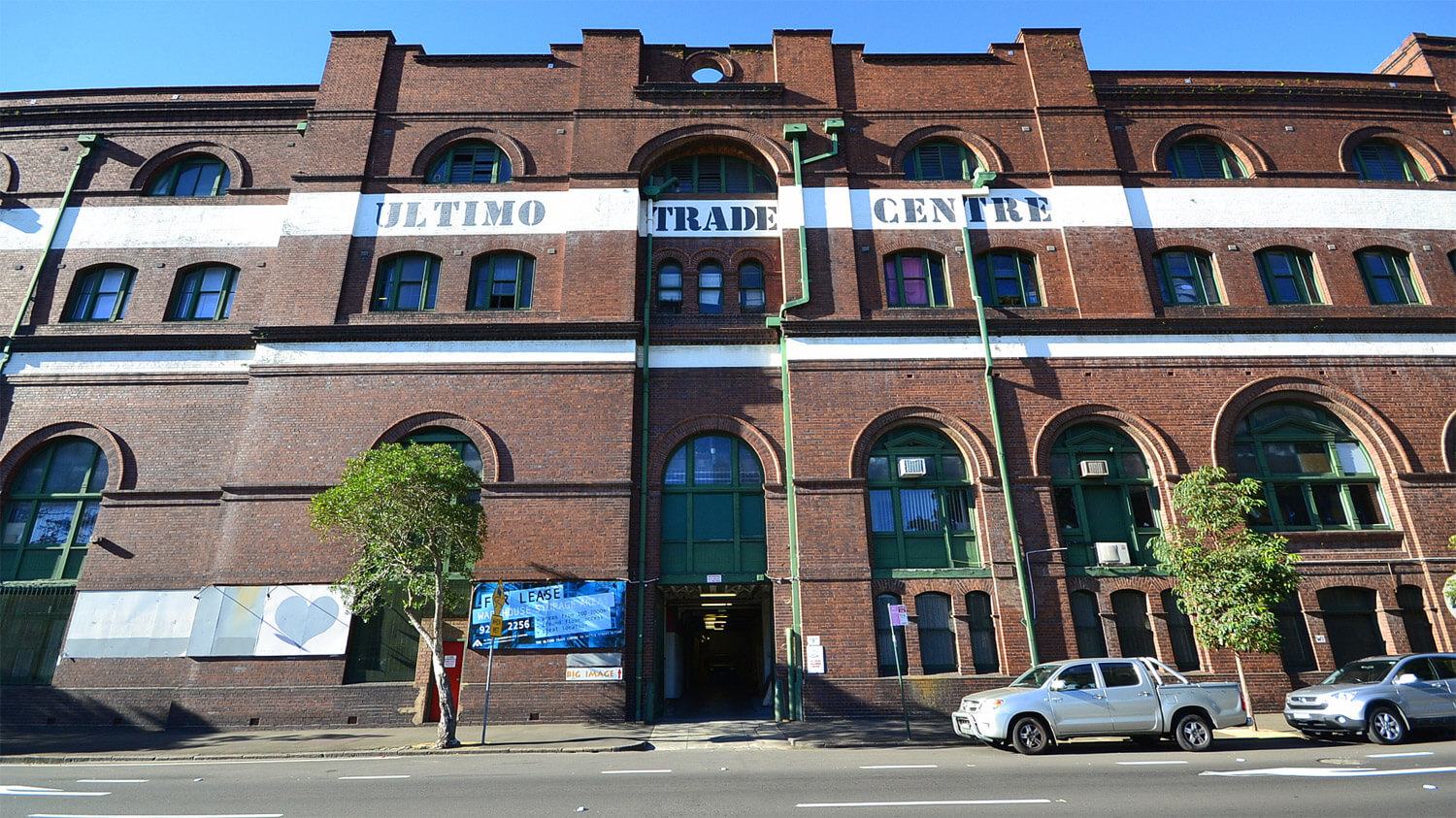
Region: Sydney city
% of Chinese residents: 36.6%
The direct neighbour of Chippendale above, Ultimo is basically the “other” side of the UTS campus and education district that’s a little less slick and modern, but home to a bit more greenery overall in return.
Its demographics in terms of Chinese interest again stem almost wholly from its university offerings, and proximity to the same within easy reach nearby.
Ultimo has a bit more of a “modern industrial” feel to it compared to Chippendale courtesy of its several heritage-listed blocks and the odd terrace house dotted in. Some of its older buildings have been repurposed into loft-style living accommodations, or used by businesses to set up start-up type offices in the same high-ceiling vein.
“Ultimo has a bit more of a “modern industrial” feel to it compared to Chippendale.”
Ultimo’s busy due to being close and well-connected to basically everything in central Sydney, with major arterial highways right on its doorstep, central station a literal few minutes walk away, and the CBD likewise within easy strolling distance.
It’s also just as expensive, noisy and traffic-heavy as its location would indicate, and definitely of a suburb for those who prefer the active, busy life.
4. Eastwood
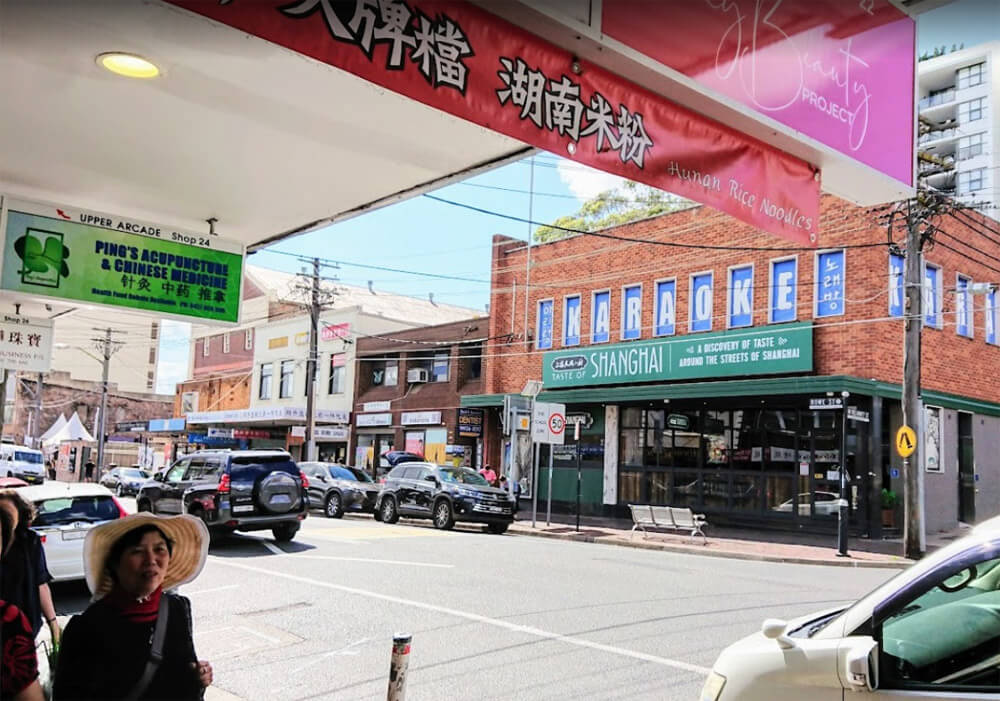
Region: North Shore
% of Chinese residents: 38.4%
Largely a massive quantity of low-density residential homes clustered around its main central shopping strip, Eastwood is something of a better-connected version of Carlingford that likewise carries similar appeal due to its proximity to quality schools.
It features a well-serviced train station that can get you into Sydney city in relatively short order, and access to an immense array of amenities both within its own borders (Eastwood Shopping Centre) or just a short drive away (West Ryde, Top Ryde).
“Many are also drawn to living here as an easy springboard for both work and educational opportunities.”
Many are also drawn to living here as an easy springboard for both work and educational opportunities at tech-and-business hub of Macquarie Park, with Macquarie University booming for international students and a number of prominent companies and medical services all located here.
This is another case of a mix of connectivity and desirability combining to make for an expensive place to live, with average freestanding home prices climbing substantially in recent years and a bunch of townhouse and apartment developments being added to try and keep up with the demand.
3. Rhodes
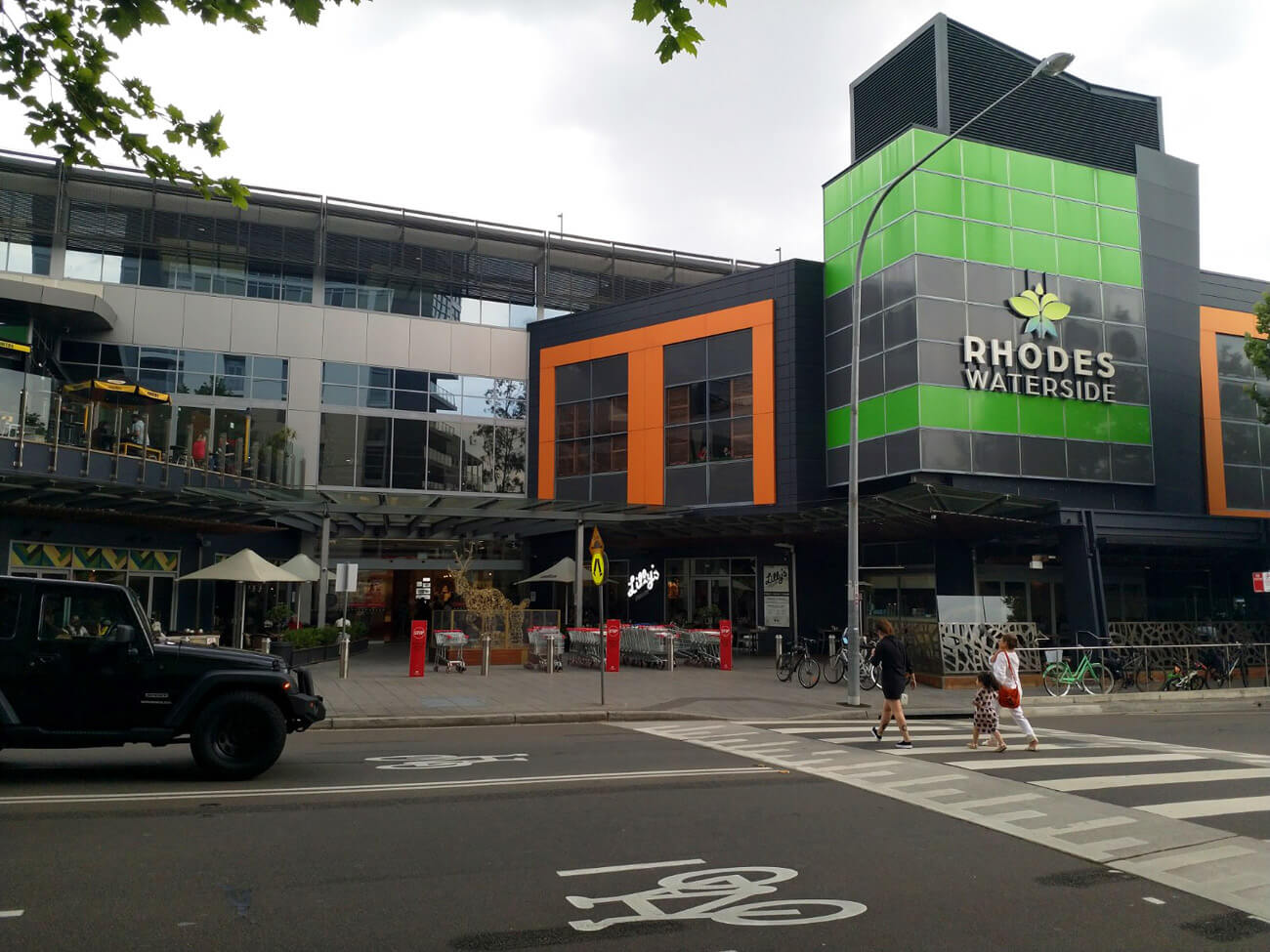
Region: Inner West
% of Chinese residents: 44.5%
Another suburb which has seen massive, rapid expansion, Rhodes has again provide highly popular with the Chinese market due to its location/affordable living combo.
Not only does it provide reasonably fast train access into the city or elsewhere on the North Shore, but its waterfront aspect adds a different dynamic and some extra views into its overall atmosphere.
While its past as an infamous dumping ground for chemical products still lingers over its reputation slightly, modern-day Rhodes couldn’t be more different. Multiple high-residential towers coexist behind landscaped waterfront walkways, dog parks and public education spaces, with numerous new restaurants and services popped up to service all these new people along with it.
“Its waterfront aspect adds a different dynamic and some extra views into its overall atmosphere.”
Rhodes Waterside is a bustling and comprehensive shopping centre home to big-box retail, and there are several prominent companies based here as well. Meanwhile on the “other” side of Rhodes across the highway, low-density homes which sit on the waterfront experience an entirely different lifestyle, with respectable slices of parkland for exercise of the water itself for boating.
Prices climbed rapidly for Rhodes in recent years – the “bargain” stage for buying here is long gone – and now it’s fairly expensive for apartment living, while its freestanding homes on the east side rarely go on sale. It’s also become congested both on train and road, while its public spaces are having to share their surfaces with more and more people as well.
2. Burwood
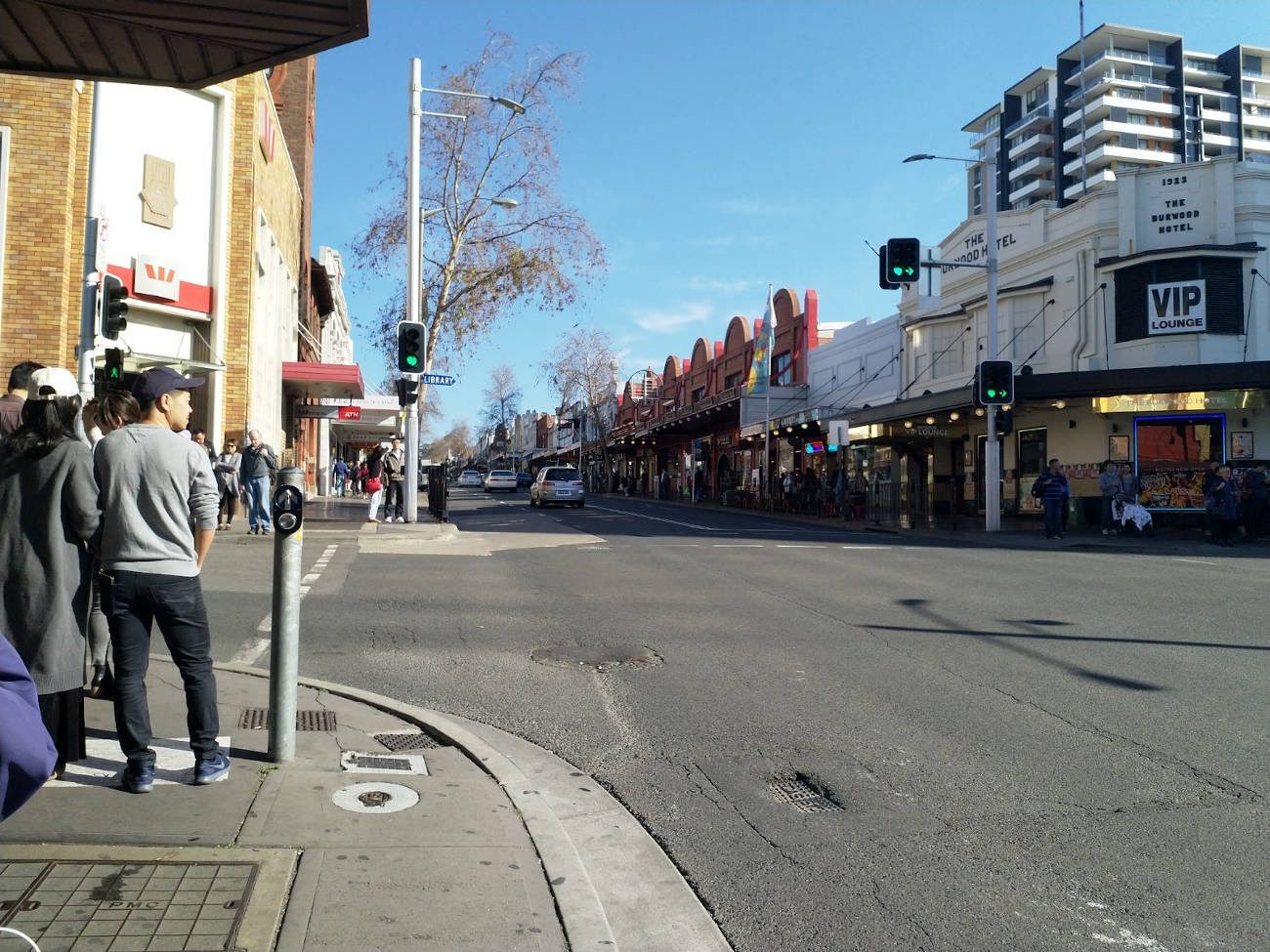
Region: Inner West
% of Chinese residents: 45.1%
There’s a cliche amongst Sydneysiders that Chinese residents seem to love the suburbs with “wood” in their names, and Burwood is the prime example of this in action. As far as hubs for eastern dining go, it’s hard to beat the eternally-buzzing and busy Burwood.
A hefty chunk of the suburb is taken up by its shopping and retail area sprawling out from around its train station and Westfield complex, and Burwood Road in the present day is packed with restaurants and cafes alike.
Some of the city’s best Chinese restaurants are also found here, many of which offer prices better than those in the city for equal or greater quality.
“Some of the city’s best Chinese restaurants can also be found here.”
The central area of Burwood can only really be described as “hectic”. Its train station is highly-used and quite cramped for its size, with people running to and fro to catch their trains within a limited space and often bumping into one another, while its footpaths are hard to navigate during busy periods due to all the people as well.
Take a stroll a few streets back, however, and Burwood quickly becomes a much more peaceful and upmarket suburb dotted with expensive freestanding houses and some nice little parks and reserves. Prices for property here are incredibly high, with its array of schools and 15 minute train ride into the city all contributing factors to its desirability.
1. Hurstville
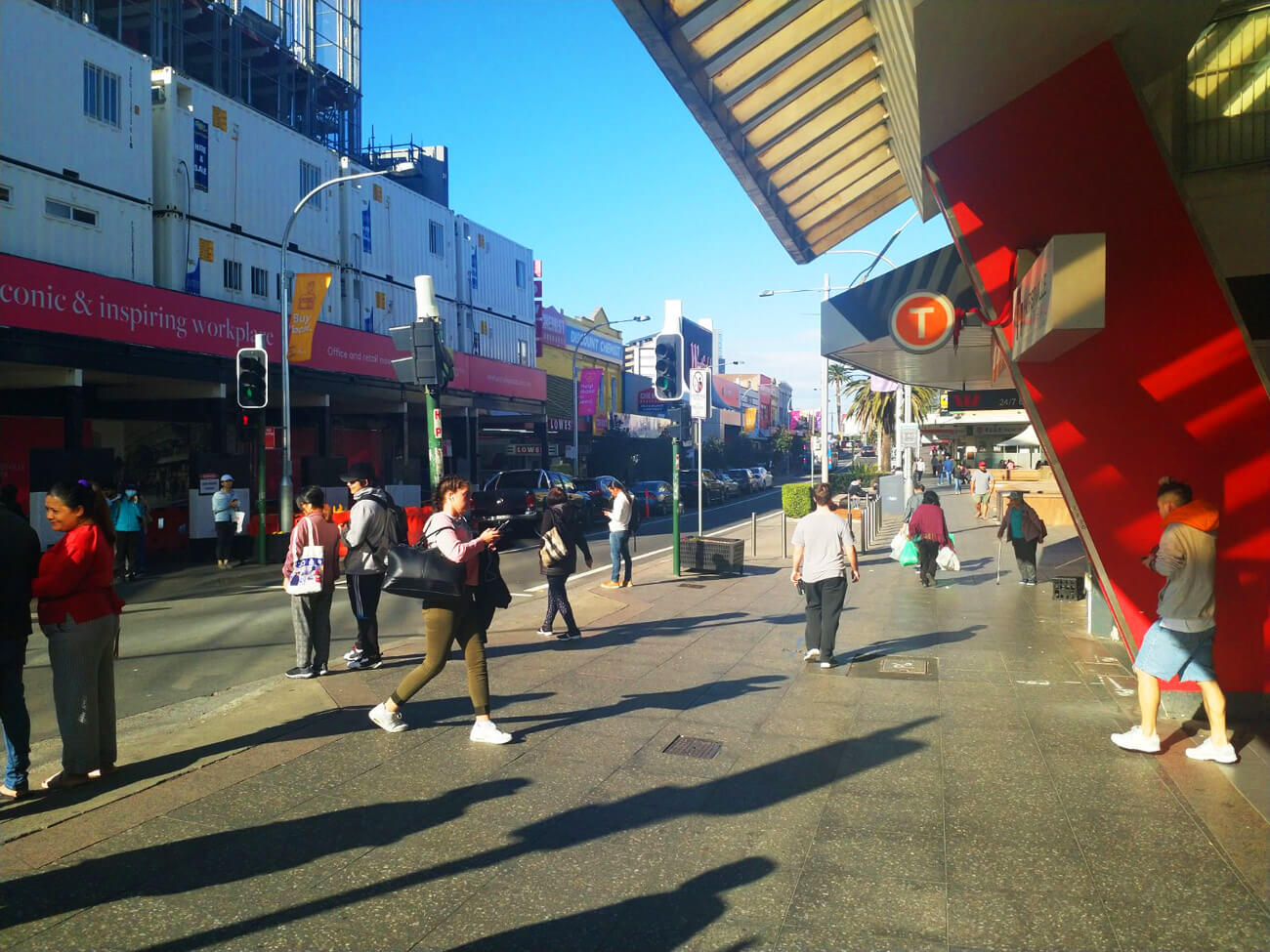
Region: Southern Suburbs
% of Chinese residents: 49.4%
The most Chinese of Chinese suburbs, in the next Australian census don’t be surprised to see Hurstville become the first suburb in the country with a majority-Chinese population. It’s not “officially” a Chinatown, but given its quantity of Chinese restaurants and other stores, it might as well be.
Hurstville is likewise another renowned hub for Chinese dining and shopping; just along main thoroughfare Forest Road itself there are nearly 20 such restaurants to choose from, from barbecue-style, to noodle houses, to yum cha and more.
Hurstville’s main strip here around its station is a little more spaced out and roomy than Burwood, while still possessing a large Westfield shopping centre and a strongly-connected public transport hub for buses right nearby.
“Don’t be surprised to see Hurstville become the first suburb in the country with a majority-Chinese population.”
Connectivity here is a strong point as Hurstville is a major stop for express lanes, and despite its physical distance from the CBD can have you in the city (or down in Sutherland Shire) in just over 20 minutes either way.
Outside of this central district, Hurstville again becomes quite prestigious in terms of its home and block sizes, with a decent helping of medium-density apartments further away from the station as well. It’s also far more reasonably-priced than Burwood, but still not “cheap” for property by any means.
Traffic is pretty terrible along its main strips, but isn’t too bad otherwise, and it’s pretty leafy and quiet outside of the central hub.
Honourable mentions: Wolli Creek, Campsie, Epping, Berala



